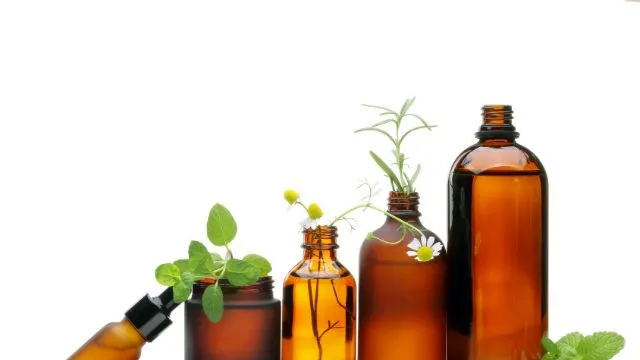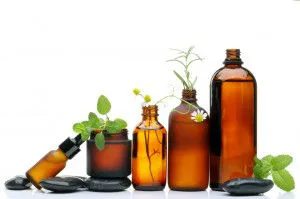
- Share on Facebook306
- Share on Pinterest
- Share on Twitter
With an ever increasing interest in homeopathic remedies, more people are looking into making their own healing balms for common conditions.
This drive is pushed in part by a mistrust of commercial products, many of which make claims that are supposedly based on science. Sadly, too often we find that the science behind commercial products is incomplete or just plain flawed.
Consumers are more aware than ever that many of the ingredients being used to make commercial products are not healthy. Studies are piling up against such ingredients, and this knowledge is being translated into action.
Since all commercial manufacturers have their eyes on profit margins and the personal care product industry is not well regulated, you can never be sure that all the ingredients being used are safe or really effective, especially for long term use.
The Answer
For common, non-life threatening conditions, you can rely on Mother Nature and make your own healing balms. When you make your own you know exactly what is in them, and you can also tweak them to suit your specific needs.
Once you understand how to make the basic balm, and learn the different properties of essential oils, you can formulate a wide variety of healing balms for specific uses.
The foundation of all balms
The pure essential oils that give potency to healing balms are so concentrated and powerful that they cannot be applied directly to the skin. They are best diluted with other healthy oils, and mixed with a semi solid base to attain the right consistency. When you make your own healing balms, an organic base like natural beeswax is preferred over petroleum jelly. Some oils to consider are:
- Sweet almond oil
- Grapeseed oil
- Organic coconut oil
- Apricot kernel oil
- Avocado oil
- Jojoba oil
- Cocoa butter
- Shea butter
Essential tools for making balms
Since healing balms are mostly used for therapeutic purposes, take great care to ensure cleanliness during their preparation and storage. It is ideal to have a set of tools exclusively for this purpose.
- Measuring spoons and cups
- Glass droppers with rubber/plastic bulbs
- Glass carafe for heating the ingredients
- Glass rods or wooden skewers for stirring the mixture
- A food-probe thermometer
- Containers for storage
Storage containers should have tight-fitting lids; they should be sterilized and kept dry. A stove and double boiler are required for melting the solids and gently heating the salves.
To prepare the basic balm
- Add one part beeswax and 2 parts carrier oil in a glass carafe, and melt together over gently simmering water, stirring with a glass rod or a new wooden chopstick. Beeswax melts around 1450F (630C).
- Remove from heat and let the mixture cool down to approximately 1200F (500C), stirring all the time.
- Stir in essential oils.
- Beat the mixture well for a few minutes until it is has thickened slightly.
- Pour into individual storage containers; screw on the lids when the balm has reached room temperature and has solidified.
To adjust the consistency of the basic balm
It is mainly the beeswax content that determines how hard or soft your balm is. Temperature also affects the consistency. For example, coconut oil is liquid in warm temperatures but solidifies when atmospheric temperature drops. As soon as the basic balm is ready, place a teaspoonful in the freezer for a few minutes for a quick test of consistency. If it is too hard, add more oil, if it’s too runny, add more melted beeswax.
For chapped lips
This is a simple, basic balm that has an endearing natural flavor. It is very easy to prepare, and ideal for everyday use.
- Organic coconut oil – 2 tbsp
- Pure Beeswax grated – 1 tbsp
- Vitamin E oil – 5 drops
Melt the beeswax gratings and coconut oil in a small glass bowl placed over simmering water. Beat them with a glass rod or wooden skewer until completely melted. Cool down to lukewarm temperature. Test it by dropping a bit on the wrist. It should feel warm, not hot. Stir in the vitamin E oil and pour into tiny containers for setting.
For healing
To make healing balms, in the place of vitamin E oil, one or more essential oils can be added to the basic balm. Each essential oil has its own characteristic healing properties and should be handled with care and caution. Since they are highly volatile, add them when the mixture is much cooler, preferably just before it starts solidifying. Here’s a list of commonly used essential oils and their many therapeutic properties.
- Thyme – Anti-microbial, anti-rheumatic, antispasmodic, anti-venomous.
- Eucalyptus – Wound-healing, decongestant, anti-asthmatic, antiviral, may ease sunburn, sinusitis, rheumatism, respiratory problems, headache.
- Rosemary – Anti-rheumatic, astringent, detoxification, energy, infection, migraine, muscle pain, sinusitis and premenstrual syndrome.
- Chamomile – Anti-asthmatic, anti-rheumatic, hay fever, neuralgia, windburn and toothache.
- Geranium – Varicose veins, neuralgia, premenstrual syndrome and gout.
- Peppermint – Anesthetic, antispasmodic, toothache, gum infection, decongestant, gout, headache, insect repellent, neuralgia, respiratory problems and sinusitis.
- Sandalwood – Respiratory problems, throat irritation, antiseptic, antispasmodic, anxiety, astringent, insect repellent and insomnia.
- Lavender – Menopause, menstrual problems, rheumatism, sunburn, windburn, tonsillitis and wounds.
- Clove –Neuralgia, antiseptic, disinfectant, antispasmodic and toothache.
- Cinnamon – Antiseptic, antifungal, anesthetic, toothache and infections.
Here are a few recipes to make your own healing balms for different purposes.
For bruises and fresh scars
- Organic beeswax – 12g
- Sweet almond oil – 83ml
- Calendula oil – 20ml
- Lavender oil – 1ml
- Grate the beeswax into a glass carafe and mix in sweet almond oil.
- Melt them in a double boiler and take out the mixture when it is completely liquefied.
- Cool it for a few minutes before stirring in the essential oils of calendula and lavender.
- Pour into clean containers and keep aside to set.
- Apply as a thin layer to bruised skin and tender areas where the scabs have just fallen off after an injury or burn. The skin will heal quickly and return to normal.
For headaches
This is a handy balm to carry along. Mental fatigue and tension are the usual causes of headache. When applied at the first sign of a heavy head feeling, this invigorating and soothing balm will clear up the mind and give a new burst of energy. The eucalyptus oil will relieve sinus congestion, another reason for headache.
- Natural beeswax grated – 2 tbsp
- Grapeseed oil – 1 tbsp
- Shea butter – 3 tbsp
- Peppermint oil – 15 drops
- Lavender oil – 10 drops
- Eucalyptus oil – 3 drops
- Melt the first three items over boiling water and take out when fully melted.
- Cool slightly before adding peppermint, lavender, and eucalyptus oils.
- Mix in well and pour into small containers; leave aside until set.
- Close with airtight covers, as eucalyptus has a very pungent aroma.
 For psoriasis
For psoriasis
The main active ingredient in this balm is neem oil, known for its antimicrobial property. It is very strong, so the addition of the soothing lavender oil helps to tone it down a bit. When you make the balm, the dosage of neem oil can be adjusted to suit your tolerance threshold. Tea tree oil complements the antimicrobial action of neem. Beeswax is not used here, as skin damaged by psoriasis and eczema needs to breathe.
- Shea butter – 40g
- Cocoa butter – 30g
- Castor oil – 20g
- Sweet almond oil –10g
- Neem oil – 5 -10g
- Lavender oil – 5 drops
- Tea tree oil – 5 drops
- Add the first 5 ingredients into the double boiler and melt them together over gentle heat.
- Remove from heat when completely liquefied.
- Cool down a bit and stir in tea tree oil and lavender oil.
- Beat over a bowl of ice to thicken the balm.
- Transfer to a can for storage and keep aside.
- Since there’s no beeswax in the mixture, it will take over a day to set.
- Apply as needed.
“Until man duplicates a blade of grass, nature can laugh at his so-called scientific knowledge. Remedies from chemicals will never stand in favour compared with the products of nature, the living cell of the plant, the final result of the rays of the sun, the mother of all life.” – T. A. Edison
-The Alternative Daily
Sources:
http://www.herbsguide.net
https://www.thealternativedaily.com/5-essential-oils-to-alleviate-stress
https://www.mountainroseherbs.com/aroma/ess.php
- Share on Facebook306
- Share on Pinterest
- Share on Twitter

